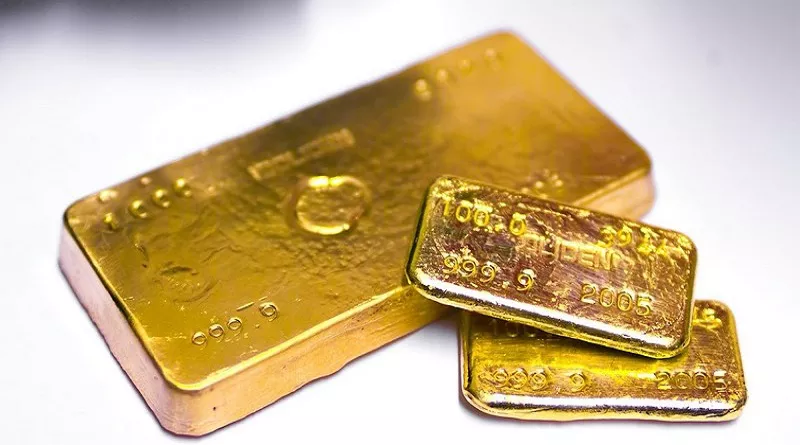Gold has long been a symbol of wealth, prosperity, and craftsmanship. When evaluating gold from different regions, certain factors such as purity, craftsmanship, and market reputation come into play. Japan, with its rich history and meticulous approach to art and industry, stands out as a notable producer of high-quality gold. This article delves into the various aspects that define the quality of Japanese gold, examining its historical context, manufacturing standards, and market perception.
Historical Context
Japan’s relationship with gold dates back centuries. The country’s gold mining history began in the 8th century, with the discovery of gold in the Yamato region, now Nara Prefecture. The metal played a significant role in the country’s economic and cultural development. During the Edo period (1603-1868), Japan became one of the world’s largest gold producers, with the Sado Island gold mine being particularly noteworthy. This historical backdrop has contributed to the nation’s reputation for high-quality gold.
Purity Standards
One of the primary indicators of gold quality is its purity. Japanese gold is renowned for its high purity levels, often measured in karats or as a percentage. The most common form of high-purity gold in Japan is 24-karat gold, which is 99.99% pure. This standard is comparable to the finest gold available globally. Japanese refineries employ advanced technologies to ensure the removal of impurities, thus maintaining the highest levels of purity.
The Tokyo Commodity Exchange (TOCOM) plays a crucial role in maintaining these high standards. TOCOM sets stringent guidelines for gold trading, ensuring that only gold meeting the highest purity standards can be traded. This regulatory framework helps in maintaining the integrity and quality of Japanese gold in both domestic and international markets.
Craftsmanship and Design
Japanese gold craftsmanship is unparalleled, blending traditional techniques with modern innovations. The artistry involved in goldsmithing in Japan is deeply rooted in the country’s cultural heritage. Techniques such as “Mokume-gane” (wood grain metal) and intricate filigree work demonstrate the exceptional skill of Japanese artisans. These traditional methods, passed down through generations, ensure that each piece of gold jewelry or artifact is crafted with precision and care.
Contemporary Japanese goldsmiths continue to innovate while respecting these age-old techniques. The integration of modern technology with traditional craftsmanship results in products that are both aesthetically pleasing and structurally sound. The meticulous attention to detail and the high level of craftsmanship contribute significantly to the perception of Japanese gold as being of superior quality.
Technological Advancements
Japan is a global leader in technological innovation, and this extends to its gold industry. Japanese refineries utilize cutting-edge technology to refine and process gold. The use of advanced techniques such as electrolysis and chemical refining ensures that Japanese gold is of the highest purity and quality.
One notable example is the Tanaka Kikinzoku Group, one of Japan’s leading precious metal refiners. The company employs state-of-the-art technology to produce gold of exceptional quality. Their rigorous quality control processes, combined with innovative refining techniques, ensure that the gold they produce meets the highest standards.
Market Reputation
The market reputation of Japanese gold is another testament to its quality. Japan is one of the few countries with a significant influence on the global gold market. The high standards maintained by Japanese gold producers and the rigorous regulations enforced by bodies like TOCOM contribute to this positive reputation.
In the global market, Japanese gold products, particularly jewelry and bullion, are highly sought after. Collectors and investors alike appreciate the purity and craftsmanship of Japanese gold. The consistent quality and the trust associated with Japanese gold make it a preferred choice for many.
Environmental and Ethical Considerations
In recent years, there has been a growing emphasis on ethical and environmentally responsible mining and refining practices. Japan has been proactive in this regard, implementing stringent regulations to ensure that gold production does not harm the environment. Japanese gold mines and refineries are required to adhere to strict environmental standards, minimizing their ecological footprint.
Furthermore, Japan is committed to ethical sourcing of gold. The country supports initiatives such as the Responsible Jewellery Council (RJC) and adheres to guidelines that ensure gold is sourced without exploitation or conflict. This commitment to ethical practices enhances the reputation of Japanese gold as not only being of high quality but also ethically produced.
Cultural Significance
Gold holds a special place in Japanese culture, symbolizing prosperity, purity, and status. This cultural reverence for gold translates into the care and respect with which it is handled and crafted. Traditional festivals and ceremonies often feature gold in various forms, further embedding it in the cultural fabric of the nation.
This cultural significance is reflected in the way gold products are marketed and valued within Japan. Consumers in Japan have a deep appreciation for the quality and craftsmanship associated with gold, driving demand for high-quality products. This internal market dynamic ensures that producers maintain the highest standards.
Economic Impact
The gold industry in Japan plays a significant role in the country’s economy. While Japan is not the largest producer of gold, the value-added processes such as refining and craftsmanship contribute significantly to the economy. The export of high-quality gold products adds to Japan’s trade balance, highlighting the importance of maintaining superior quality standards.
See Also What does spot mean when buying gold?
Conclusion
In conclusion, Japanese gold is synonymous with high quality, purity, and exceptional craftsmanship. The country’s historical association with gold, combined with stringent purity standards and advanced technological processes, ensures that Japanese gold remains highly regarded globally. The meticulous craftsmanship and cultural significance further enhance its reputation, making it a preferred choice for both investors and consumers.
The market perception of Japanese gold as being of superior quality is well-deserved, supported by a robust regulatory framework and a commitment to ethical and environmentally responsible practices. As Japan continues to innovate and uphold its high standards, the quality of Japanese gold will undoubtedly remain a benchmark in the global gold industry.


